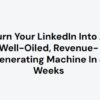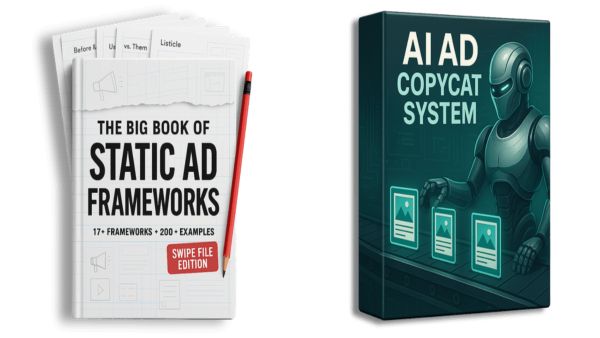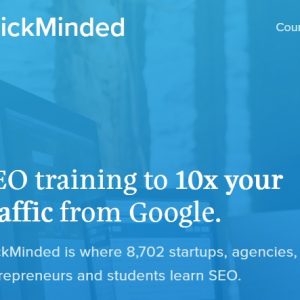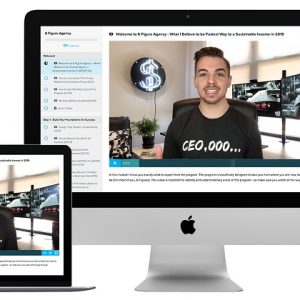No products in the cart.
[GroupBuy] The Big Book of Static Ad Frameworks + AI Ad Copycat System
$44.00 $25.00
- Payment method: I will send the payment link to your email.
- Deliver by: Google Drive, Mega.nz
Category: Marketing
The Big Book of Static Ad Frameworks stands as a foundational guide for anyone navigating the intricate world of digital advertising, offering a systematic approach to crafting high-converting static image ads and thereby directly addressing the pervasive challenge of achieving consistent Return on Ad Spend (ROAS).
Table of Contents
The Big Book of Static Ad Frameworks
The realm of digital advertising, particularly on Meta’s expansive platforms like Facebook and Instagram, often feels like a volatile frontier, fraught with uncertainty and the constant pressure to deliver returns. It’s a landscape where even seasoned marketers can find themselves caught in what’s famously described as “The ROAS rollercoaster” – a dizzying cycle of fluctuating performance, ad spend uncertainty, and the persistent gnawing feeling of creative guesswork.
This inherent instability is precisely the core problem that The Big Book of Static Ad Frameworks seeks to resolve, offering not just a salve, but a definitive cure through structured creative methodologies. It posits a revolutionary idea: successful static ads are not born from random acts of genius, but rather from the systematic application of proven psychological triggers within repeatable structures. This comprehensive guide, far from being another theoretical course, serves as a tactical reference, an indispensable toolkit for marketers, business owners, and agencies alike who are tired of throwing digital spaghetti at the wall and instead crave predictable, profitable outcomes.
The Peril of “The ROAS Rollercoaster”
The struggle described by Colin Elefante-Smith, founder of Ad Oven, resonates deeply with countless advertisers: “3 years ago I was burning $50K a month on losing ads. Every morning, I’d open Ads Manager with that familiar pit in my stomach.” This vivid depiction encapsulates the emotional and financial drain of the “ROAS rollercoaster.” It’s a cycle perpetuated by the absence of a repeatable process, a void where proven templates and consistent frameworks should exist. Marketers often resort to desperate measures: blindly copying competitors, following the often-misguided advice of online gurus, or worse, creating ads based on intuition rather than data-backed principles.
This relentless cycle of trial and error is inherently inefficient and costly. It traps businesses in a reactive stance, constantly chasing fleeting trends or hoping for a lucky break, rather than building a stable, scalable advertising operation. The true cost isn’t just wasted ad spend; it’s the erosion of confidence, the stalled growth, and the sheer exhaustion that comes from continuous creative ruts. Without a systematic approach, every new ad campaign feels like starting from scratch, a fresh gamble where the odds are disproportionately stacked against achieving consistent profitability.
The underlying issue is a fundamental misunderstanding of what makes an ad effective. It’s not necessarily about groundbreaking artistic flair or a viral gimmick, but rather about tapping into immutable aspects of human psychology. When creative execution is disconnected from these foundational principles, it becomes a shot in the dark. The Big Book of Static Ad Frameworks directly confronts this by providing the missing link: a bridge between creative intent and psychological impact, ensuring that every ad isn’t just visually appealing but strategically designed to convert.
Unearthing the Periodic Table of Image Ads
The pivotal insight that transformed Colin Elefante-Smith’s approach, and forms the bedrock of The Big Book of Static Ad Frameworks, was the realization that “The highest-converting static ads weren’t random acts of creative genius. They followed specific, repeatable patterns.” This discovery was monumental, akin to uncovering a “Periodic Table Of Image Ads.” Just as chemistry demystifies matter by breaking it down into fundamental elements, this book breaks down high-performing ads into predictable, reusable frameworks. These are not mere suggestions; they are battle-tested structures proven to work consistently, transcending specific industries, unique products, or diverse audience demographics.
This paradigm shift from creative chaos to systematic order empowers marketers with an unprecedented level of control and predictability. Once the elements—the frameworks—are understood and categorized, the ability to construct winning combinations becomes an on-demand process. This concept is revolutionary because it democratizes high-level creative execution; one no longer needs to possess an innate “creative genius” but rather the discipline to apply proven methodologies. It transforms ad creation from an art-form requiring mystical inspiration into a science guided by empirical evidence and structured templates.
The power of these frameworks lies in their deep alignment with fundamental human psychology. They are meticulously designed not just to capture attention, but to hold it, build trust, and compel action, all by leveraging intrinsic human behaviors. By incorporating key psychological triggers like pattern interruption to stop the scroll, social proof to establish instantaneous trust, contrast cues to highlight unique selling propositions, curiosity gaps to create an irresistible urge to know more, and visual hierarchy to subtly guide the viewer’s attention, these frameworks ensure that ads operate not by accident, but by design. This psychological underpinning is what gives The Big Book of Static Ad Frameworks its enduring effectiveness, making its principles timeless rather than transient trends.
Tangible Transformation – Client Success and User Empowerment
The ultimate validation of any marketing methodology lies in its tangible results, and The Big Book of Static Ad Frameworks boasts an impressive track record of transformative client success. One client, for instance, experienced an astonishing boost, selling out their entire year’s inventory in just four months, achieving a phenomenal 7x ROAS. Another dramatically shifted their fortunes, transitioning from losing money on a digital product funnel to turning a profit within a single week. Yet another client showcased the scalability potential, increasing ad spend by 50% in one month without any detrimental drop in their ROAS, demonstrating that growth doesn’t have to come at the expense of profitability when using these frameworks.
These individual success stories collectively paint a picture of profound user empowerment. For the business owner or marketer, the benefits are immediately apparent and deeply impactful. Creative production is fundamentally streamlined: gone are the hours spent staring at a blank canvas, paralyzed by creative block. Instead, users can simply “open the book, pick a creative to copy, and have your ad done in 20 minutes.” This drastic reduction in creative time frees up invaluable resources and removes a significant bottleneck in campaign deployment.
Furthermore, the quality of testing undergoes a dramatic improvement. The hit rate for successful ads jumps significantly, from a discouraging 1 in 10 to a much more favorable 3 in 10. This means substantially less money is wasted on underperforming ads, directly translating into more profit. When a winning ad is discovered using one of the 17+ battle-tested frameworks—such as ‘Before & After,’ ‘Us vs. Them,’ or ‘Listicle’—the precise reasons for its success are clear, facilitating confident variation and scalable expansion. Each framework comes complete with psychological triggers, situational guidance, and execution tips, ensuring that users not only copy but also understand and adapt. With over 200 real ad examples organized into an easy-to-use swipe file, continuously updated monthly to reflect “what’s working NOW,” The Big Book of Static Ad Frameworks provides an unparalleled, living resource for achieving predictable and profitable ad performance.
AI Ad Copycat System
While The Big Book of Static Ad Frameworks provides the essential blueprints and psychological underpinnings for creating high-converting static ads, the sheer volume of creative variations and the relentless pace of digital marketing demand ever more efficient tools. This is where the conceptual power of an AI Ad Copycat System comes into play, not as a replacement for human ingenuity, but as a powerful amplification of the principles laid out in the book.
Imagine an artificial intelligence, steeped in the knowledge of the 17+ battle-tested frameworks and trained on the 200+ real ad examples (and their ongoing monthly updates), capable of not just identifying patterns, but actively helping to replicate and iterate upon them. Such a system would embody the next logical step in applying structured ad creation, moving beyond manual application to an automated, intelligent process that could significantly enhance the speed, scale, and precision with which winning ads are generated and deployed.
The Synergy of Frameworks and Algorithmic Intelligence
The core premise of an AI Ad Copycat System revolves around the perfect synergy between proven creative frameworks and advanced algorithmic intelligence. It envisions an AI that isn’t just a generic content generator, but one specifically trained on the structured formats and psychological triggers detailed in The Big Book of Static Ad Frameworks. This AI could learn to recognize the subtle nuances of a ‘Before & After’ ad, understanding not just the visual progression but also the underlying psychological appeal of transformation. It could decipher the effective contrast in ‘Us vs. Them’ scenarios, grasping how to make a Unique Selling Proposition (USP) impossible to ignore by optimizing visual hierarchy and messaging.
Such a system would transcend simple keyword stuffing or template filling, evolving into a sophisticated creative assistant. By analyzing the vast repository of successful ad examples provided in the book’s swipe file, the AI could identify specific elements—image types, headline structures, call-to-action placements, and even color palettes—that consistently lead to high engagement and conversion within each framework.
My personal analysis suggests that this combination would be transformative; human marketers provide the strategic intent, psychological understanding, and overall creative direction, while AI handles the repetitive, pattern-based generation, ensuring adherence to proven structures while offering rapid iterations. It augments human creativity by providing a powerful analytical and generative co-pilot, not replacing it, but making it unbound by manual limitations.
Consider the monthly swipe file updates from The Big Book of Static Ad Frameworks. An AI Ad Copycat System could instantly ingest these new winning examples, learning “what’s working NOW” at an unprecedented speed. It could then cross-reference these new patterns with existing frameworks, suggesting modifications or even entirely new hybrid frameworks that incorporate emerging trends.
This continuous learning loop would ensure that the advertiser’s creative output remains perpetually optimized, adapting to algorithm changes and audience preferences much faster than manual analysis could ever achieve. The AI would become the vigilant guardian of ROAS, constantly identifying, learning from, and replicating the most effective patterns, ultimately converting abstract data into concrete, high-performing ad variations tailored precisely to campaign goals.
Automating Creative Production – From Blank Canvas to Blueprint
The promise of an AI Ad Copycat System extends directly to automating much of the tedious and time-consuming creative production process. For marketers, the dreaded blank canvas syndrome, where one spends “an hour staring at a blank canvas,” could become a relic of the past. Instead, the workflow could be revolutionized: a marketer identifies their campaign goal, selects a desired framework from The Big Book of Static Ad Frameworks, and inputs key product/audience details into the AI system. The AI, leveraging its deep understanding of the chosen framework and its vast example database, could then generate multiple ad variations – complete with suggested visuals, compelling headlines, and persuasive body copy – within minutes.
This automation isn’t about sacrificing quality for speed; it’s about leveraging intelligence for efficiency. The AI would operate within the guardrails of the proven frameworks, ensuring that every generated ad adheres to the principles of pattern interruption, social proof, curiosity gaps, and visual hierarchy. It could even suggest A/B test variations across different elements within a single framework, providing a scientifically structured approach to optimization that goes beyond mere intuition. This capability dramatically reduces creative block and significantly ramps up output, allowing marketing teams to launch more campaigns, test more variations, and iterate faster than ever before.
My creative insight here envisions the AI Ad Copycat System integrating seamlessly with Meta’s ad platforms. Once a suite of ads is generated, the system could pre-populate ad sets, suggest optimal targeting based on the ad’s content, and even forecast potential ROAS based on historical performance data tied to similar frameworks. This level of automation moves marketers from simply guessing what might work to confidently deploying variations of what has worked, dramatically increasing their “hit rate” from what was potentially 1 in 10 to a consistent 3 in 10, or even higher, thereby eliminating wasted spend and maximizing profitability.
Scaling with Precision – The Future of ROAS Optimization
The ultimate objective of combining the structured wisdom of The Big Book of Static Ad Frameworks with the computational power of an AI Ad Copycat System is to enable unprecedented scaling with precision. Finding a winner is one thing, but replicating that success and scaling ad spend without a drop in ROAS is often the biggest challenge. This is precisely where an AI-powered system, grounded in proven frameworks, shines. When a particular framework (e.g., ‘Listicle’) and its specific execution prove successful, the AI can immediately generate an array of new variations, drawing from the same core principles but adapting them with fresh angles, different visuals, or nuanced copy, all without diverting from the ‘why it worked.’
This capability allows marketers to confidently scale ad spend, much like the client who increased budget by 50% in a month with no performance drop. The AI ensures that as volume increases, the quality and conversion power of each ad iteration remain high, because they are built upon the robust, psychologically-driven foundations of the frameworks.
Furthermore, the AI can continuously monitor live campaign performance, identifying subtle shifts in audience response or platform algorithms and proactively suggesting content adjustments or framework changes, ensuring that ads remain effective and profitable over time. This continuous optimization loop transforms marketing from a reactive guessing game into a proactive, data-driven science.
My personal vision for the future, fueled by such a system, is one where marketers spend less time on manual creative execution and more time on high-level strategy, audience insights, and innovative product development. The AI Ad Copycat System, functioning as a powerful extension of The Big Book of Static Ad Frameworks, effectively becomes the agency-level creative arm at an accessible price point, providing a systematic approach that eradicates guesswork and minimizes wasted ad spend. It transforms the digital advertising landscape, making predictable ROAS not an aspiration, but an achievable, consistent reality for businesses of all sizes, fundamentally changing how creative assets are conceived, produced, and optimized.
Conclusion
The Big Book of Static Ad Frameworks directly addresses the pervasive “ROAS rollercoaster” by offering a meticulously structured, tactical reference guide that replaces creative guesswork with proven, repeatable ad patterns. It distills the essence of high-converting static ads into 17+ battle-tested frameworks, underpinned by fundamental human psychology, and supported by over 200 real-world examples and continuous monthly updates.
This systematic approach, exemplified by client successes like achieving 7x ROAS and scaling ad spend by 50% without performance drop, streamlines creative production, dramatically improves testing hit rates from 1 in 10 to 3 in 10, and enables profitable scalability. Ultimately, the book positions itself as an indispensable tool for business owners, growth marketers, brand managers, agencies, and freelancers alike, promising a consistent, predictable path to increased Return on Ad Spend and a definitive end to wasted creative efforts.
Sales Page:_https://adoven.thrivecart.com/big-book-of-statics/
Delivery time: 12 -24hrs after paid
Be the first to review “[GroupBuy] The Big Book of Static Ad Frameworks + AI Ad Copycat System” Cancel reply
Related products
Marketing
$19.00
$85.00
Sale!











Reviews
There are no reviews yet.